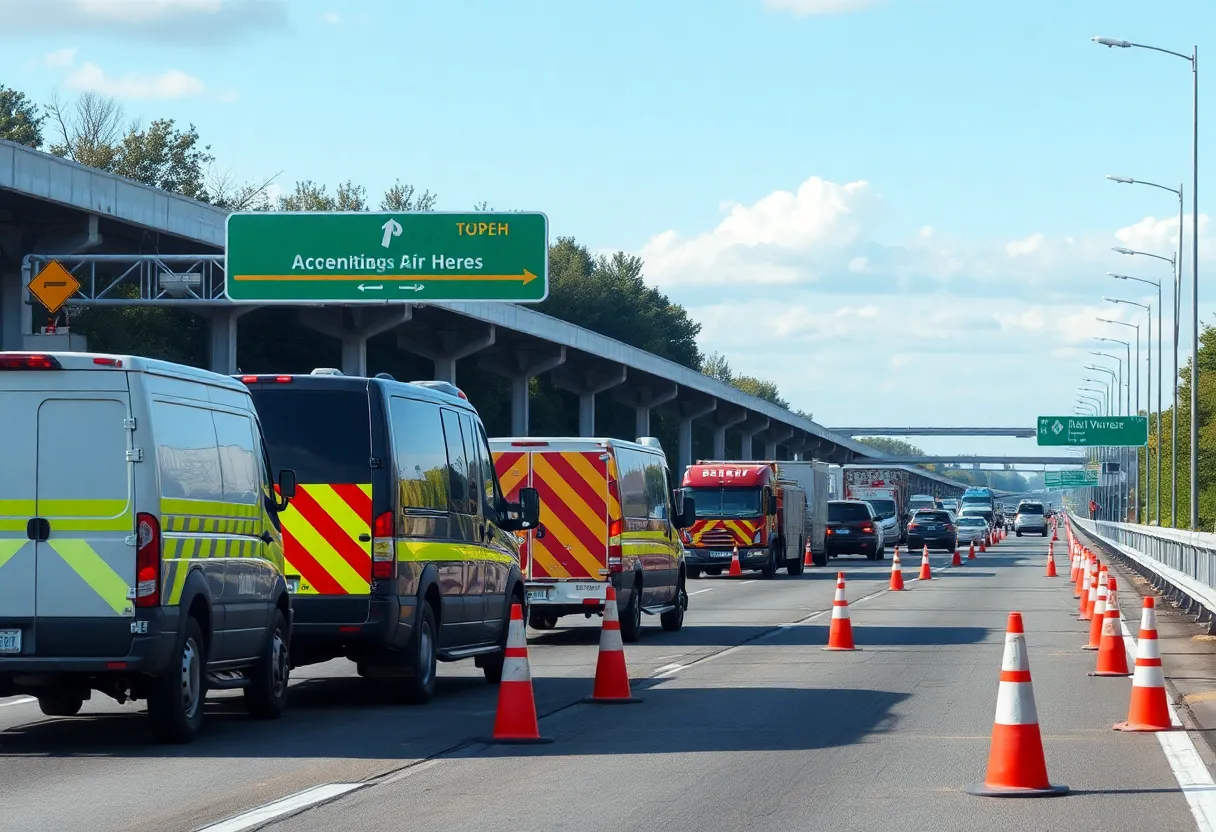California, September 9, 2025
News Summary
As discussions heat up ahead of the September 12 deadline, California business groups are advocating for a postponement of the cap-and-trade greenhouse gas emissions reduction program’s renewal. Concerns over transparency and adequate reforms for the program have been raised, highlighting its significance in achieving California’s ambitious climate goals, including carbon neutrality by 2045. With revenue from auctions declining, experts warn that immediate measures are necessary to meet critical emissions reduction targets.
California business groups are calling on lawmakers to delay the renewal of the cap-and-trade greenhouse gas emissions reduction program as discussions intensify ahead of a legislative deadline on September 12. The program, initially authorized in 2006, is set to be reauthorized by lawmakers before it formally expires in 2030.
The California Chamber of Commerce expressed disappointment regarding the lack of legislative action and emphasized the importance of ensuring comprehensive discussions continue into the next year. Jennifer Barrera, the Chamber’s president and CEO, has highlighted concerns about the sustainability of the program and the future of California’s climate initiative.
California’s cap-and-trade scheme is critical for the state’s ambitious climate goals, particularly a target of achieving carbon neutrality by 2045. Governor Gavin Newsom advocates for extending the program’s reach to 2045, aiming for a renewal ahead of the approaching deadline.
Currently, the cap-and-trade program accounts for about two-thirds of California’s greenhouse gas emissions, generating billions in revenue through allowances sold at auctions. However, experts warn that without robust measures to support the program, the state might find it challenging to meet its emission reduction targets: a 40% reduction by 2030 and a minimum of 85% by 2045.
Critics of the program suggest that significant reforms are necessary, particularly concerning the allocation of revenues generated from cap-and-trade. They argue that the current structure does not adequately address environmental justice issues or the overall effectiveness of emission cuts. The California Air Resources Board is currently reviewing potential changes to the cap-and-trade program.
Recent analyses underscore that California needs to ramp up its annual emission reductions from the current rate of 2.5% to approximately 8.8% to meet the 2045 carbon neutrality goal. However, revenue from cap-and-trade auctions has seen a notable decline, with an estimated loss of around $3 billion over the past year, further impacting California’s budgetary concerns.
In addition, critics point out that proposals to allocate nearly half of the program’s funds for projects such as the high-speed rail system could detract from necessary immediate carbon reduction initiatives. Industry officials have expressed concerns that removing free credits may compel refineries and large emitters to relocate outside California, potentially leading to job losses and increased consumer costs.
Data also indicates that recent cap-and-trade auctions have experienced significant levels of unsold credits, suggesting a decline in market confidence in the program’s future. The Legislative Analyst’s Office has advised lawmakers to take their time in evaluating policy choices related to the program’s reauthorization, highlighting the severe implications involved.
Various environmental groups are advocating for a reauthorization that guarantees stringent emissions limitations and equitable enforcement to protect vulnerable communities adversely affected by pollution.
Key Figures in the Cap-and-Trade Debate
- Program inception: 2006
- Program expiration: 2030 (current authorization)
- Target for carbon neutrality: 2045
- Decrease in auction revenue: $3 billion over the past year
- Current emissions reduction rate: 2.5% annually
- Needed emissions reduction rate to meet 2045 goal: 8.8% annually
- Current auction sales contribution to emissions reduction: Approximately two-thirds of total greenhouse gas emissions
FAQ
What is the cap-and-trade program?
The cap-and-trade program is a market-based regulatory system designed to reduce greenhouse gas emissions, by setting a maximum limit on emissions and allowing companies to buy and sell allowances as needed.
Why are business groups urging lawmakers to delay reauthorization?
Business groups are concerned that rushing the reauthorization process may overlook necessary discussions and reforms needed within the program, potentially setting back sustainability goals.
What are the targets for emissions reduction in California?
California aims for a 40% reduction in greenhouse gas emissions by 2030 and at least an 85% reduction by 2045.
What concerns have been raised about the allocation of cap-and-trade funds?
Critics are worried that the allocation of nearly half of the cap-and-trade funds to projects such as high-speed rail may divert resources from immediate carbon reduction efforts, thus failing to address urgent climate challenges.
Deeper Dive: News & Info About This Topic
- Bloomberg Government: California Business Groups Urge Delay on Cap-and-Trade Extension
- Wikipedia: Carbon Trade
- California Chamber of Commerce: Cap-and-Trade Delay
- Google Search: Cap-and-trade California
- Los Angeles Times: California Cap-and-Trade Crossroads
- Encyclopedia Britannica: Cap-and-Trade
- Politico: California Climate Newsletter
- Google News: California Cap-and-Trade
- Politico Pro: Assembly’s Draft Cap-and-Trade Language
- Carbon Credits: Ultimate Guide to Understanding Carbon Credits
- Planetizen: California’s Cap-and-Trade Program
- Sacramento Bee: Op-Ed on Cap-and-Trade
- Google Scholar: California Cap-and-Trade

Author: STAFF HERE COSTA MESA WRITER
The COSTA MESA STAFF WRITER represents the experienced team at HERECostaMesa.com, your go-to source for actionable local news and information in Costa Mesa, Orange County, and beyond. Specializing in "news you can use," we cover essential topics like product reviews for personal and business needs, local business directories, politics, real estate trends, neighborhood insights, and state news affecting the area—with deep expertise drawn from years of dedicated reporting and strong community input, including local press releases and business updates. We deliver top reporting on high-value events such as the OC Fair, Concerts in the Park, and Fish Fry. Our coverage extends to key organizations like the Costa Mesa Chamber of Commerce and Boys & Girls Clubs of Central Orange Coast, plus leading businesses in retail, fashion, and technology that power the local economy such as Vans, Experian, and South Coast Plaza. As part of the broader HERE network, including HEREAnaheim.com, HEREBeverlyHills.com, HERECoronado.com, HEREHollywood.com, HEREHuntingtonBeach.com, HERELongBeach.com, HERELosAngeles.com, HEREMissionViejo.com, HERESanDiego.com, and HERESantaAna.com, we provide comprehensive, credible insights into California's dynamic landscape.





